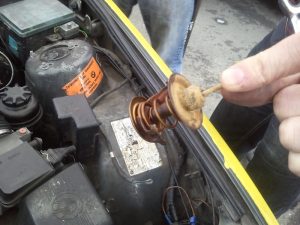An automobile heater is a boon that makes it easier to drive the vehicle in winter. You will be enormously irritated if your car heater is blowing cold air when idling instead of hot air.
These kinds of car problems are a headache. The heater in the car not working can make your freezing weather months practically unbearable for driving.
Many things can go wrong with car heaters because, like a home heater, several parts function together to heat your vehicle. If one or more of these problems exist, your vehicle may blow cold air.
In this blog, we will converse about the most common causes of why my car heater is blowing cold air and how to fix vehicle heaters.
How Does A Car Heater Work?
The car engine has three categories for heating: electrical engine heating, liquid-cooled engine heating, and air-cooled engine heating. Most cars have liquid-cooled engines.
A blend of antifreeze and water travels through the engine, collecting added heat produced by friction and combustion. Most engine coolant flows to the radiator after departing the engine, where it cools before coming back to the engine.
Some of the coolants are transferred to the heating core, where it travels through an array of tubes. When you activate your heater, the fan blows air heated by the hot coolant into the car’s cabin.
The long procedure is why it takes some time to heat up and why the engine needs to run for a while before there is adequate heat to warm your cold hands.
Why Is My Heat Blowing Cold Air In My Car?
Here are the root causes of why the car heater not getting hot enough.
Low Antifreeze/Coolant Level
If you don’t have sufficient coolant, this could cause a problem with air temperature. Antifreeze is responsible for both cooling and warming the engine.
When you need warm air to blow during winter, the antifreeze is sent from the engine to the heater core, which then blows hot air into your car’s cabin.
Heaters commonly blow cold air when they are first activated. But as the engine heats, the air becomes warm with it. If it does not, then examine your air coolant system fluid level.
If it is low, the heater core won’t be able to perform its job and generate warm air.

Broken Thermostat
The thermostat is a regulator liable for opening and closing relative to the antifreeze’s temperature. The thermostat stays closed until your engine heats to a particular temperature.
The antifreeze won’t disperse accurately if they don’t open when the desired temperature is touched. This causes your clogged heater to blow cold air and sometimes causes the engine to overheat.
On the other hand, if this valve is stuck open and declines to close, the engine will take a long to warm up. If your heating system blows lukewarm air rather than cold air, there is a great possibility that an open thermostat is a cause.
The thermostat gauge must communicate to the heater core that the automobile engine is hot, which should commence the procedure of heating the rest of the vehicle.
If not, it means that the thermostat is damaged, the antifreeze will not travel to the heater core, and the rest of the car will remain cold.

Clogged Heater Core
Another common cause of the car heater not working is the clogged heater core. It generally sits directly at the dashboard’s back and is chiefly liable for defrosting and warming up the automobile.
They are cooling gear manufactured of tubing that transfers the warm coolant from your engine in and out to aid in diffusing the warmth brought by the coolant. Here are the signs indicating a problem with the heater core.
- Your car is using more antifreeze than normal
- The engine overheats
- There is a fruity smell inside your car
- There is fog inside your automobile
If you witness any of these symptoms, your heater core may be clogged. There are many ways this could transpire.
There could be rubbish or rust obstructing the core’s internal tubes, which you can fix with some flushing. Or maybe debris has blocked the heater core fins.
Broken Heater Controls
Another potential reason for the heater blowing cold air in the car is the controls on the dashboard. With time, these controls wear out and stop working appropriately.
For illustration, if the heat control valve, which one of the dashboard controls operates, is bad, you can get trapped with cold air rather than hot.

How To Fix A Car Heater Blowing Cold Air?
If your car heater only works when driving, here is how you can fix it.
Replace The Heater Core
A damaged heater core can cause various issues, including weird odors, leaks, and decreased heat output. You can repair it, but mostly, it is best to replace it. Follow these steps to replace your core.
- First, take out the glove box to easily access the screws that grasp the heater core in place.
- After removing the glove box, eliminate the screws.
- Cautiously pull the damaged heater core out of the casing.
- Install the new one into the casing and change the screws.
- Then, place the glove box back in place.
Replace The Thermostat
If your thermostat is faulty, you will need to replace it. Follow these steps to replace it:
- Jack up your vehicle and take out the negative battery cable.
- Drain antifreeze from the radiator.
- Eliminate the radiator hose from the thermostat casing.
- Undo the casing bolts and eliminate the casing.
- Remove the old thermostat and fit the new one.
- Change the bolts and casing, and then reconnect the hose.
- Refill coolant in the radiator and lower your automobile back down.
- Reconnect the negative battery cable.
Frequently Asked Questions:
Does Coolant Affect AC?
Yes, it can affect AC performance in several ways. Normally, it can affect your air conditioner’s temperature, airflow, and humidity. The closeness of your vehicle’s interior to the engine may affect your Ac’s temperature.
How Frequently Should You Change Coolant?
You should replace an extended-life coolant every 50,000 miles and a traditional coolant every 30,000 miles. Check your owner’s manual to know exactly when to change the coolant.
When Should You Flush Your Heater Core?
Experts suggest flushing the core every 2-3 years. This will aid in inhibiting accumulation and rust and keep your heater operating efficiently.
How Much Will It Cost To Fix No Heat In The Automobile?
If the heat doesn’t work in the car, various things can cause it. It can be a low coolant level which costs $10 to purchase and refill or a damaged heater core which costs $1000 or more to change.
Conclusion
An effective heating system can help you enjoy your winter drives to the fullest. If the heat is not working in the car, get a repair vehicle heater from a reliable mechanic. It is essential to address heater issues as early as possible.
If you overlook the issue, it may cause a bigger and more expensive problem sooner or later. Keep following CarDecent for more useful car repair tips and maintenance routines.
Last Updated on February 8, 2023 by admin

Mac is an Automotive enthusiast. He owns up to 15 vehicles. He deals with Auto problems and shows his skill to Car owners who are seeking any type of Car help.





